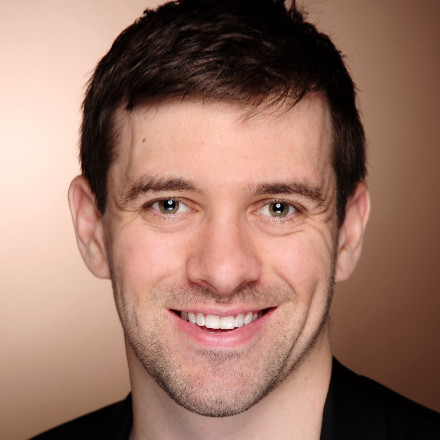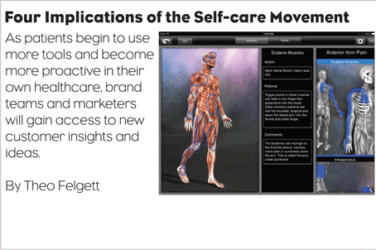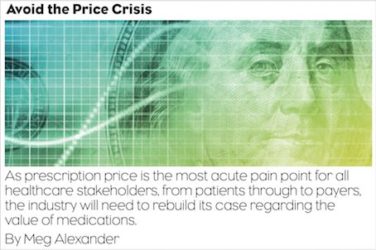James Peyer knows the venture capital (VC) model for building new biotech companies well. As the Founder and Managing Partner at Apollo Ventures, the first global longevity-focused VC firm, Peyer provided the seed funding and served in executive roles in three different companies created by the VC. But he also knew that this model for drug discovery had its limitations and was not particularly suited for the area of science that most interests him—the biology of aging.
Most VC investment cycles want a return within six or seven years, but he wanted to build drugs that don’t just treat diseases that plague us today, but could actually prevent us from getting disease and keep people healthier longer. That kind of long-term vision needed a new kind of investment model. So, Peyer co-founded Cambrian BioPharma as a distributed drug discovery company or a DisCo for short. Instead of investing in individual entrepreneurs, it is built to constantly examine multiple targets at a time.
PM360 spoke with Peyer about why he believes the DisCo model is better, the importance of finding treatments for the biology of aging, and the next generation of drug blockbusters that can emerge within 10 years.

PM360: As a DisCo, Cambrian is essentially a fund/incubator for new companies or just interesting science. Why did you decide upon this model?
James Peyer: While the “VC backing individual entrepreneurs” type of model works—and it can grow a lot of really interesting companies—there are also a lot of limitations. One of the big ones is when you’re pursuing a scientific hypothesis, such as developing a drug around a new aspect of biology, you have to be able to come at that program with the willingness to pull back if the hypothesis doesn’t turn out to be true. You want to be able to shut down an ineffective program and instead focus resources in another area. But in order to do that in pharmaceutical drug development, you have to achieve a certain level of scale.
So instead, I wanted to move into a model where we could create not one or two but 10, 20, 30 different drug development programs underneath a single umbrella and create an engine of constantly working with scientists to come up with new ideas that could become drugs and then selecting and nurturing the ones with the most promise. I think this bigger scale approach is actually starting to take over the early-stage VC ecosystem, since it allows companies to get some risk mitigation and diversification in their drug development pipelines.
Your company recently announced $60 million in private funding. Do those investors know which particular project they are investing their money towards or are they just investing in Cambrian to do with the money as you see fit?
It’s a little bit of both. In each financing for a model like this there’s some amount that’s earmarked for our existing programs and some that is earmarked for new projects as of yet unknown. One of the amazing flexibilities here is that we have the power based on how much funding we choose to be bring in to lean more in and hit the gas pedal to bring on more programs and grow really fast or instead if something goes on with the market, we can lean off the gas a little bit and start doubling down into adding value within the portfolio that exists.
You recently announced Sensei Biotherapeutics as Cambrian’s first company, and you just took Sensei through its IPO, so is developing these companies to make them public a part of the model?
Sensei is a bit of an exception for us because when we came across the program and fell in love with their technology, which uses bacteriophage viruses to treat cancer, they had already finished a Phase I clinical trial and needed a partner to help the CEO, John Celebi, restructure some parts of the company and accelerate them to Phase II. We saw an excellent alignment between our scientific vision and Sensei’s, so took a big bite of the company in 2019. But this was while Cambrian was still small, so we chose not to fund the Phase II on our own and instead opened the door to our friends and co-investors to participate directly. That is how we helped Sensei raise in total about $200 million, including the IPO. However, most of our therapies are developed in subsidiary companies that live underneath Cambrian, and those companies don’t raise capital on their own over and over again. We like to fund them ourselves.
For those companies that you are then funding yourselves, what happens once a product is approved for the market? Do you intend to commercialize it yourselves?
What’s in vogue for the industry at the moment is most groups consider their “Plan A” to be finding a big pharma partner to collaborate on pivotal trials and ultimately the commercialization of the drug. That’s no different for Cambrian, although there are two interesting points to that.
The first is you constantly have to weigh finding a partner against what it would take to commercialize something ourselves. So in the case of small indications for orphan diseases, I see more and more companies considering doing the commercialization themselves by raising money through a large IPO in order to do a pivotal Phase III trial or something like that. So, that is an option that is going to remain on the table as we make the decision on a drug-by-drug basis.
Then the other point is the potential to partner with one of the bigger pharma companies on a very long-term basis. So, it wouldn’t just be selling them an asset and asking how much money we get back in return, but forming 10- to 15-year collaborations to explore many different avenues of how a new technology or a basket of new technologies can work in many different disease areas. That opens some doors that don’t exist in traditional venture-backed biotech companies.
Where are you currently with your own assets? How far along are they in the development process?
Unfortunately, I can’t talk too much about the details right now. We are going to be releasing more information bit by bit about what’s in the portfolio already and and how we’re growing our pipeline over the next few months. What I can say is we have 13 different drugs in development underneath the Cambrian umbrella. Sensei as a non-majority-owned is our only program that is in clinical trials today and the remaining ones are in various stages of preclinical development.
For example, we have programs in regenerative medicine where this type of age-related damage is especially accentuated in the context of a rare genetic disease but is the same type of damage that builds up and makes old people sick. We also have some programs in the cardiovascular space and are just launching some things in the neurodegeneration space as well. So we have a nice spread that is designed to deliver a handful of new INDs every single year, and launch just tons of programs into the clinic once the engine is fully up and operational, which is pretty close now.
What led to the decision to focus within the field of aging biology or geroscience? What are you doing differently in this area compared to other companies in this space?
I got into this field because fundamentally I think we’re approaching the treatment of chronic diseases of aging wrong. We’re waiting for people to get sick, and then after someone is diagnosed with a terrible disease that has built up little by little over decades—such as cancer, Alzheimer’s disease, heart disease, etc.—that is when we start asking our tools in medicine to unwind that horribly complex disease. And it hasn’t been working. We are able to find ways to chip away at the edges of these diseases, but cures are not in sight for essentially any of them.
However, we have made enormous strides in understanding the true causes of these diseases, the types of damage that build up little by little in our bodies as we age that ultimately erupt into these chronic conditions. And so, the power of this geroscience approach is it takes this world of drug development for the chronic diseases of aging and flips it on its head and instead of focusing on how we undo all of this damage that’s already been done we ask whether we can design therapies that can slow or reverse the cognitive damage that builds up as we get progressively sicker and closer to being diagnosed with one of these diseases.
The fascinating thing that’s come out of mouse studies that scientists have performed is that if you build a drug that can prevent these types of damage from building up in an organism, not only does that enhance the health and longevity of that organism, but that drug also tends to be pretty effective for one or more of the diseases of aging that are most impacted by the type of damage it targets. So, I believe this field has become the most fertile ground for new drug development with the potential for some of the biggest blockbuster drugs over the next 10 years.
Building off of that, where do you in fact see the company in 10 to 15 years?
I think that with this general business model approach that we started and the quality of science I’m seeing under the Cambrian umbrella so far, that we can build a multibillion-dollar public company that’s developing all of these different drugs. But the long-term vision of the company, the reason that my team and I get up every morning, is to help catalyze a change in the way we think about the diseases that are the highest causes of human deaths today. These chronic diseases of aging account for more than 70% of all deaths in the development world.
By being on the frontlines to help switch the way we treat these diseases from reactive to preventative, we can be right on the precipice to build the defining healthcare company of the 21st century. As I look ahead 15 years from now, I’m hoping we are right at the verge of getting the first preventative, safe drug that can extend human healthy longevity into the hands of patients.









